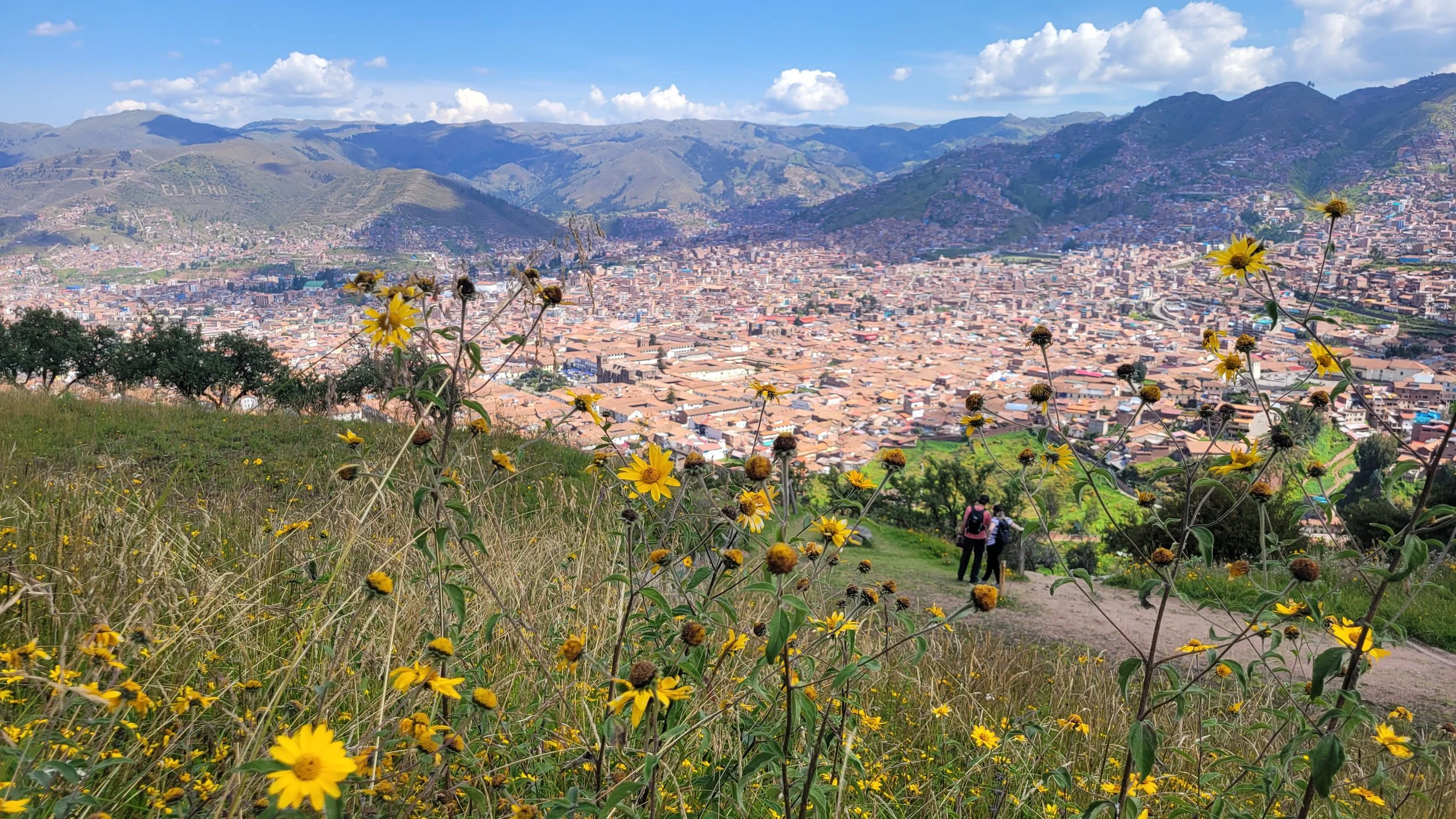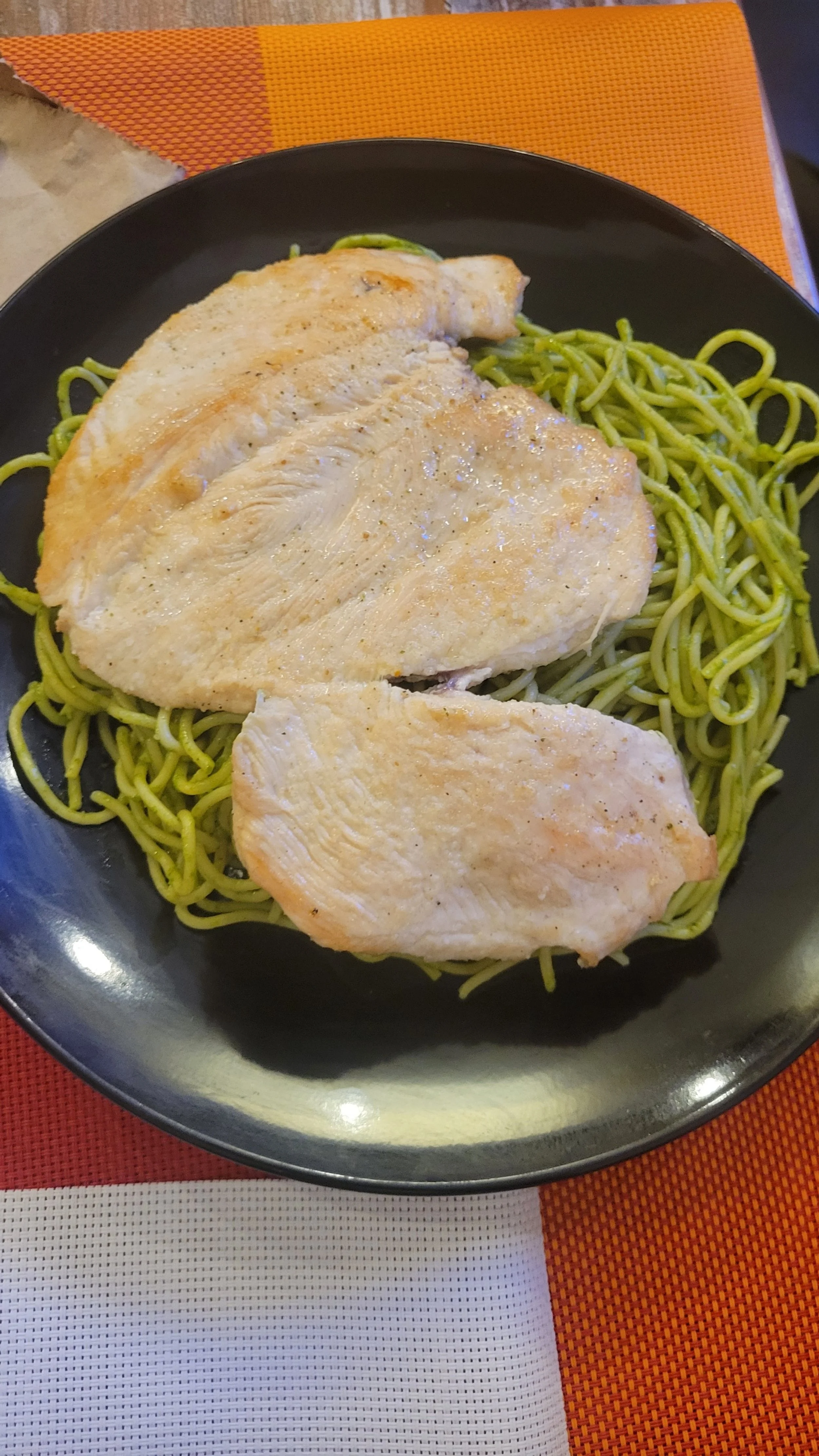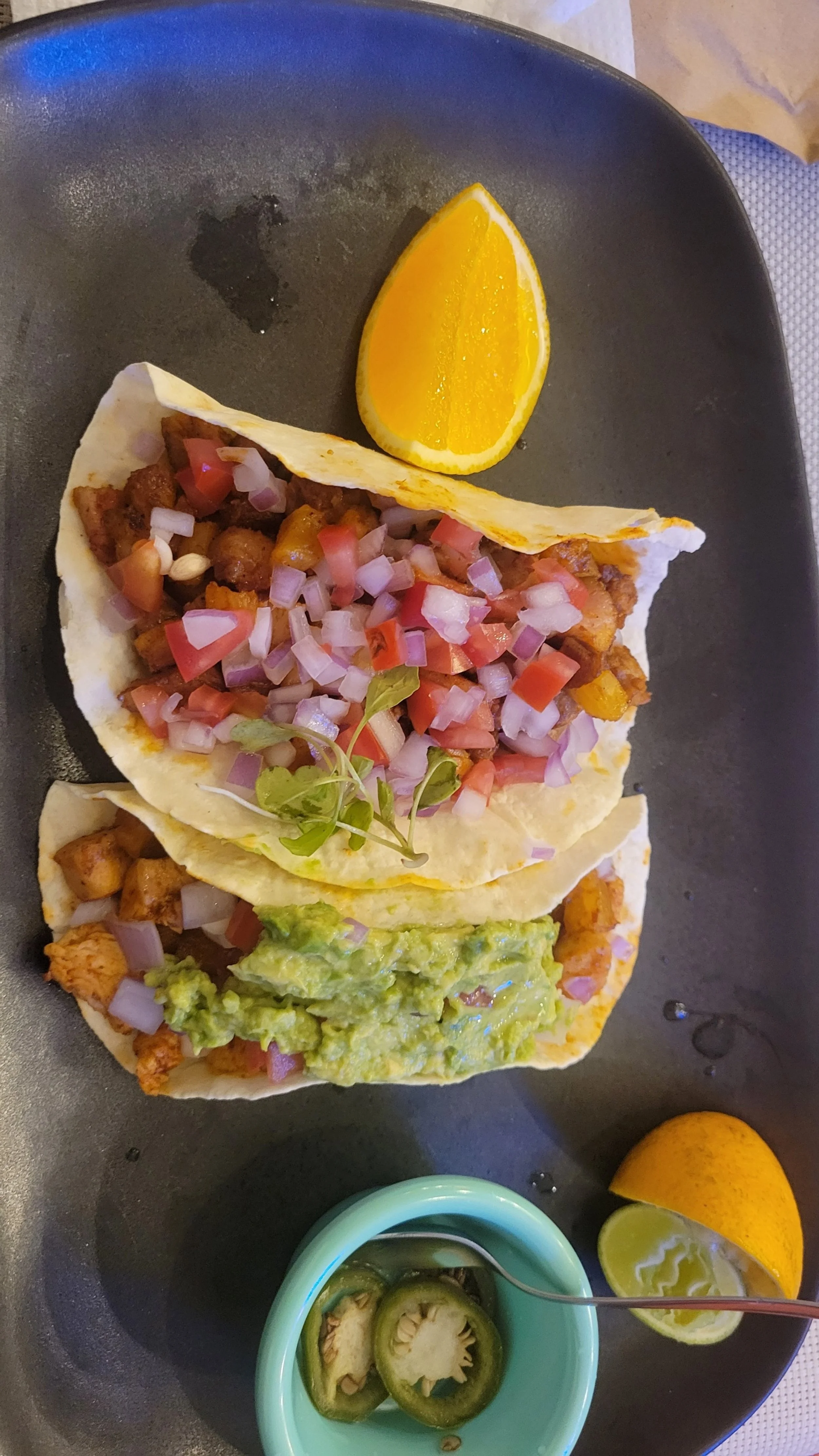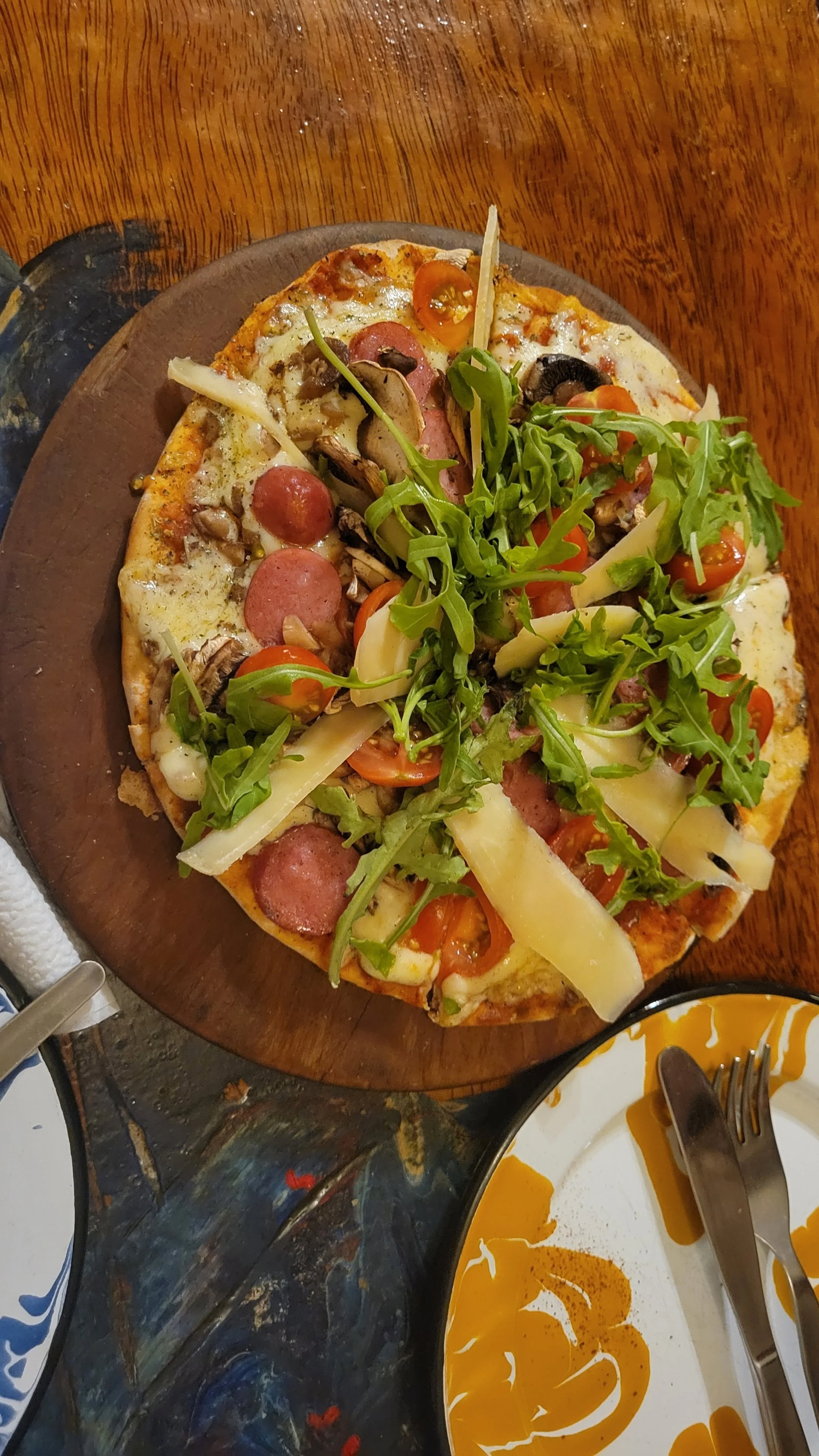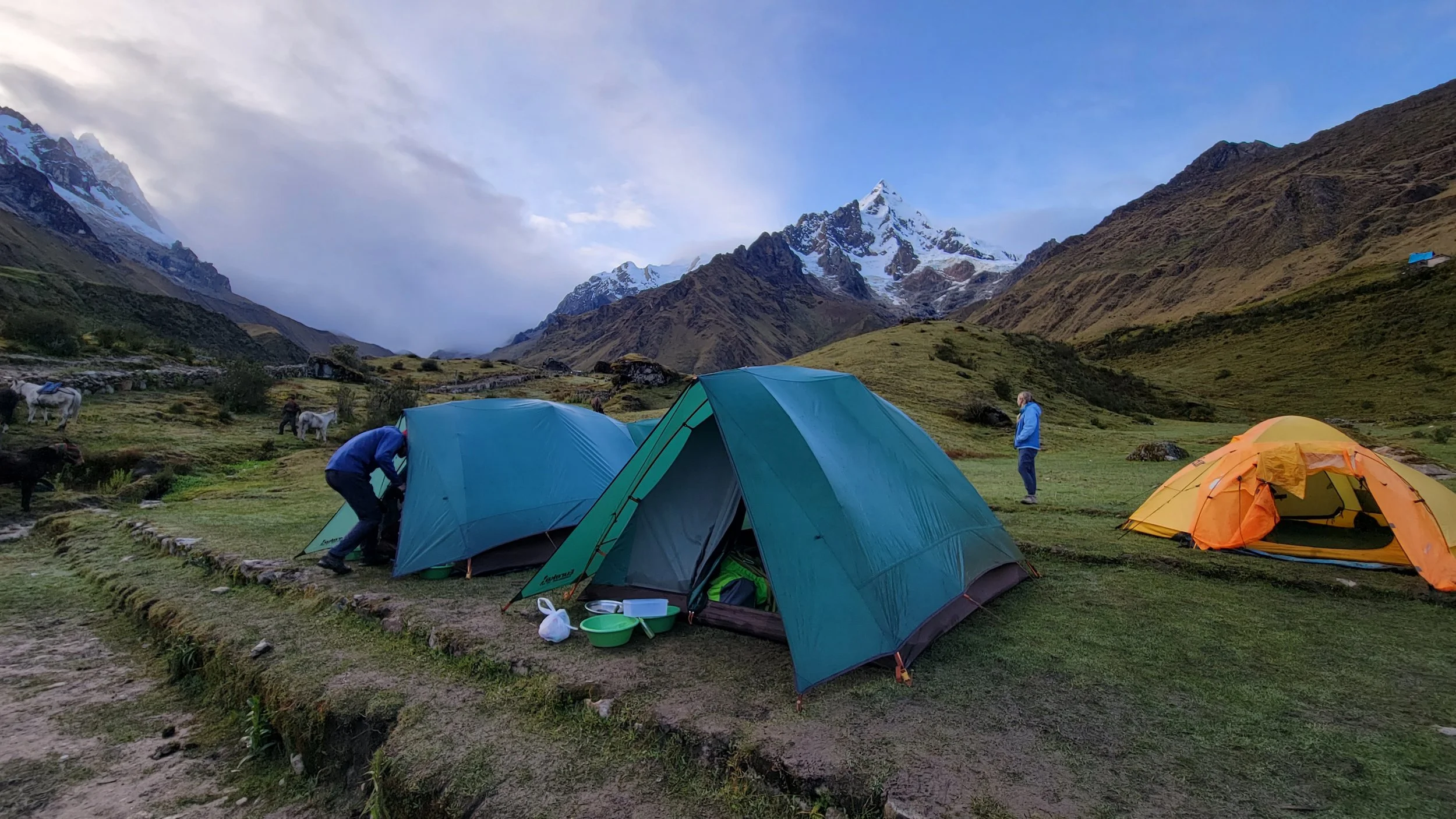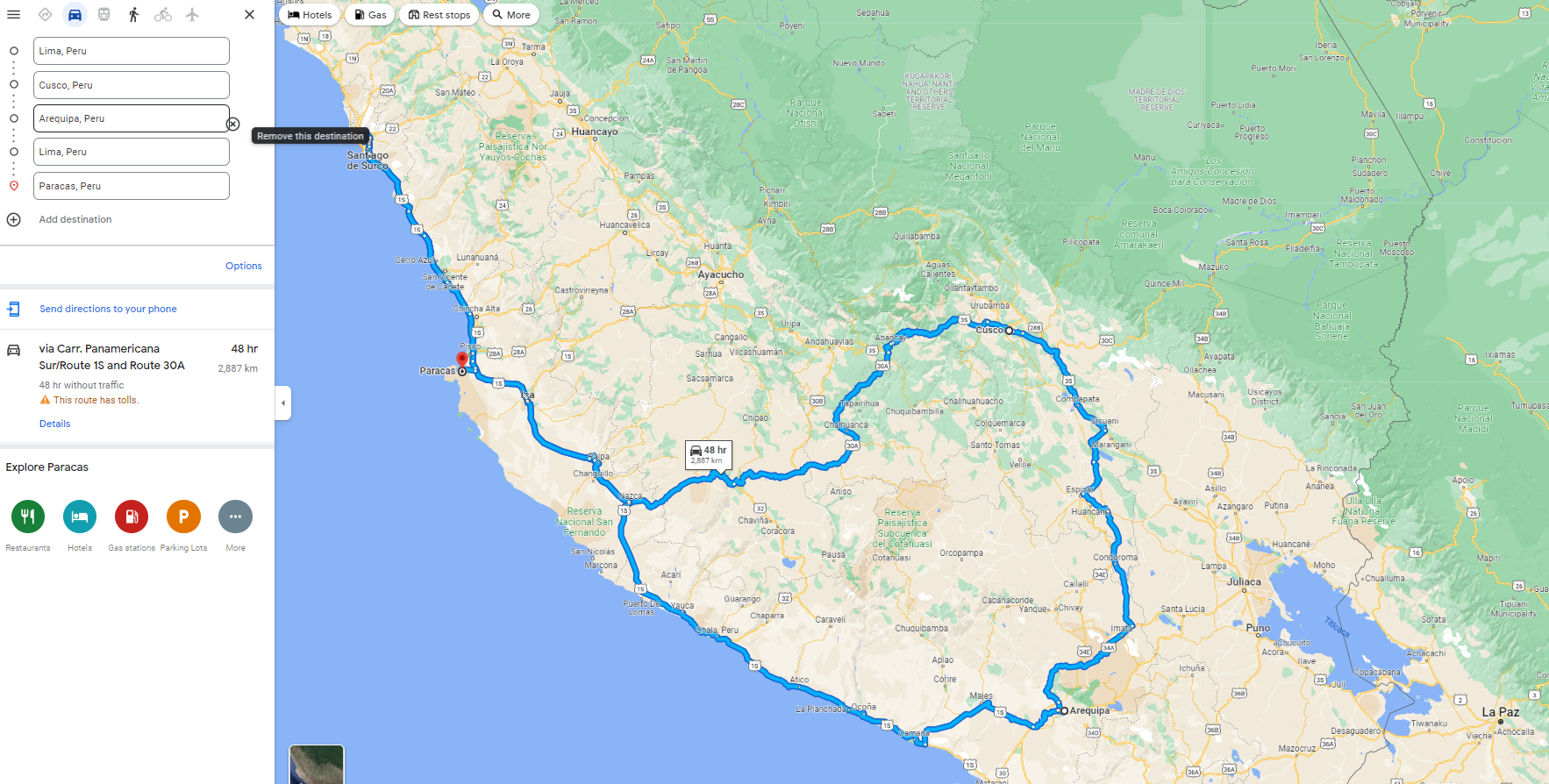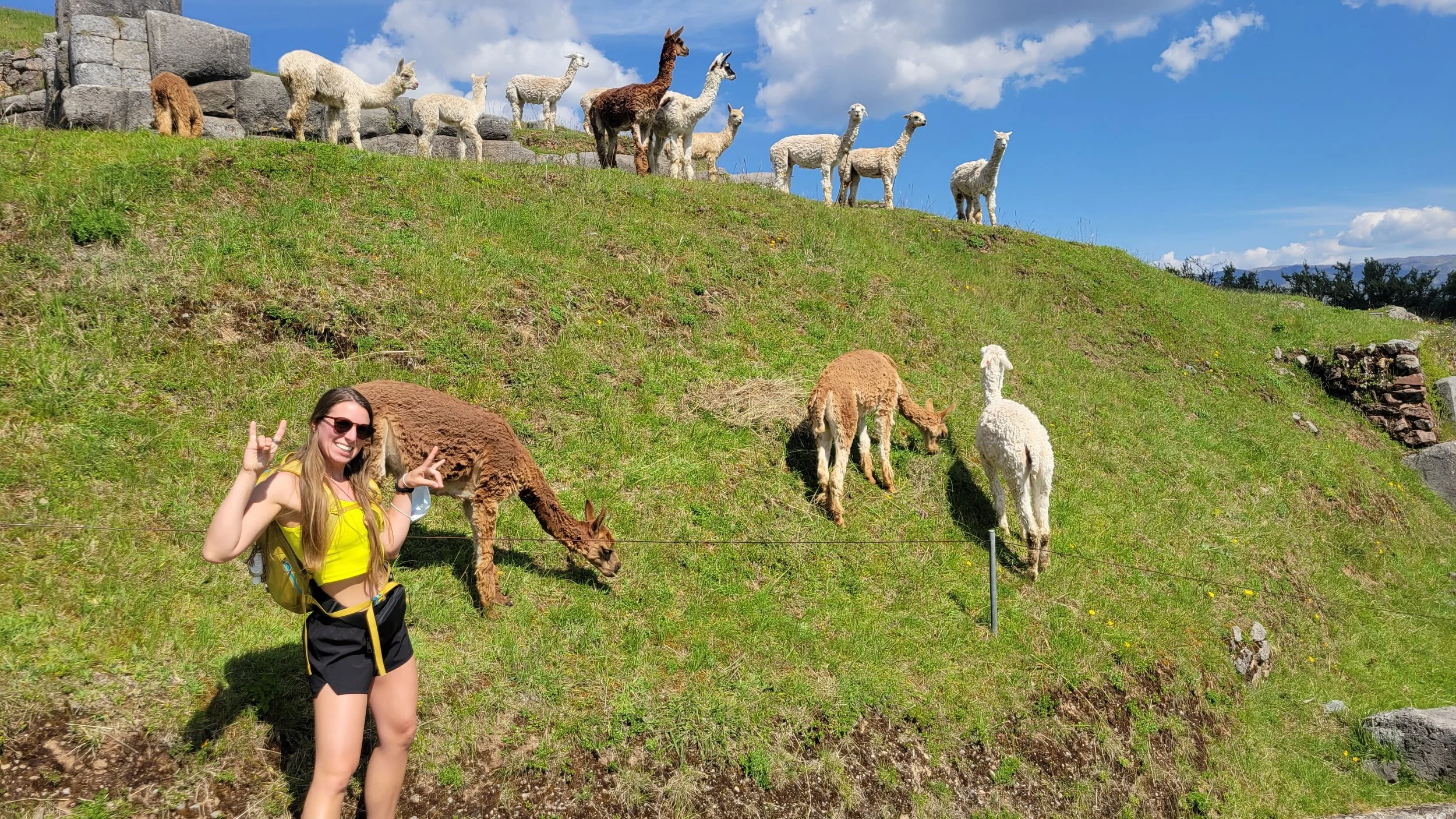Peru 101
GENERAL:
Peru was closed for an entire year to all out-of-country folk. Some cities in Peru depend heavily on tourists for their income. Thus, the country was hit hard economically by COVID. When we went through Cusco, our guide told us that they were back to 65% capacity than they had pre-COVID. Thus, some of the information I provide may only be relevant to the current time in the world. Transportation was fairly easy to book last minute, tours easy to jump on the night before, all restaurants empty, and all accommodations with availability. COVID restrictions are still in place in Peru, and many people take it very seriously. Masks are technically required (x2 mask or KN95) in all space, indoor and outdoor, in Peru. In Lima, this was very much the case - public parks, biking through the city, playing soccer, etc. You also had to show your vaccination card to enter any public building - for example, to enter a grocery store. Thus, if you are not vaccinated in Lima, you cannot go to a grocery store…take that anti-vaxxers in America!!!! Outside of Lima, it was a different story and became much less common to need your mask outdoors. However, you should always have a mask on you and your vaccination card handy because police will tell you to put your mask on in certain parts of the city. Also, just be respectful and read the situation.
Always travel tips:
Travel with a backpack or backpacks (big fan of the day pack on the front, big pack on the back), not a suitcase. I will say this always, but even more so with all of the transportation transfers and questionable streets. Of course it depends how you travel!
Carry-on all of your baggage for your flights! Especially with all of the flight delays and re-routes in our world today, don't risk it. We met some people in Cusco that didn't get their bags until they had been in the city for 5 DAYS!!!
Exchange money outside of the airport; you will always get a better rate. Big cities = better rates typically.
Keep your passport and cash/cards in a separate pouch/fanny close to your body. We didn't run into any sketchy situations, but I have heard of many & even had locals tell me to NEVER give my phone to someone to look at - even a cab driver for directions.
Peru-specific ravel tips:
Buy bottled water. It feels like you are using so much plastic (&you are), but I still recommend buying bottled water. Especially with our stomach issues on this trip, bad water was not another thing we wanted to battle!!
The massages that only cost 20 soles are probably not going to live up to your expectations. We even upgraded to a 80 soles massage and it was comparable to Coralie rubbing my back.
If you stay in Lima, stay by the coast. Miraflores or Barranco!
Artists selling paintings in the street may also be selling drugs; maybe you have 2 reasons to check out their work! They walk around with briefcase looking things.
If you take pictures with the ladies with baby sheep, alpaca, or llamas, it does come with a cost. But the fuzzy cuteness is worth it!!!
COST:
Overall, I think Peru is reasonably priced; some things appear quite cheap, while others seem pretty "typically" priced to what I'm used to in the states. On average (not counting our flights to Peru), we spent ~$90 / person / day (not counting flights TO/FROM Peru or our COVID test costs). We did take a couple domestic flights as things are VERY spread out in Peru AND the major cost was our 5-day guided Salkantay Trek. Flights are definitely more expensive than taking the bus; tour groups are definitely more expensive than doing it yourself :). Also, we got food out for most lunches and dinners. Sometimes, we would get a great meal for 2 for $15 and other times it was more like $40. Jake was with, so of course desserts were also on the menu - impossible to pass a pasteria and not start drooling over their window displays. See more details on specific categories below!
Also, many places will accept USD or soles. I would recommend exchanging money into the local currently because you are bound to get a better deal (especially since $1 = 3.6 soles). However, if you don’t want to mess with exchange or are in a pinch, USD is usually an option - sometimes even preferred in big cities. Many establishments accept credit card, BUT some will charge a 5% fee. We also ran into quite a few places that claimed their card machines were broken - not sure if it’s truth or if they just wanted cash. Anyways, I just suggest having cash on you! Even if you are American and not used to carry a single dollar ;) Even our trekking agency asked us to pay in cash as that is how they pay their staff.
Anyways, cost breakdown below; broken out by daily averages spent per person! Our goal for these 22 days was to stay under $5,000. We got really, really close!! But again, I would consider this a middle of the road travel itinerary - some comfort, no dorm beds, and even some flying to reduce time in transport (still a lot because #peru!!).
Peru Average Daily Costs (1pp)
NOTE: this DOES include our flights to and from Peru. We paid~$600 per person which really hikes up the transportation cost obviously.
NOTE: I did NOT include our COVID tests we had to take. We spent a silly amount at the Miami airport ($175pp) on the way down and also ~$50 for US re-entry. As this is NOT everyone’s experience nor a normal part of travel (hopefully!), I took this out.
NOTE: although this is for 1 person, we obviously traveled in a pair of 2. Thus, things like accommodation costs for what we had are really doubled.
LANGUAGE:
Although manageable to do without knowing Spanish, I would say there is a large benefit of knowing some Spanish basics - numbers, question words, how to order food, etc. Aside from some trips to Costa Rica and random Duolingo lessons, I have not seriously studied Spanish since high school, but surprisingly, it came back to me fairly quickly. It was definitely nice to have in the back pocket as English just isn't that well-known. Of course, your accommodations will typically speak some English and sometimes we would find folks at restaurants able to speak as well. We ordered sushi from a Spanish menu once; that was tough! I would always try my best in Spanish and when I got stuck, I would try their English. One way or another, we usually figured it out! 😁
TRANSPORTATION:
We took a combination of flights, buses, and taxis to get around in Peru. As I have mentioned a couple times, things are VERY spaced out in Peru. Thus, most major tourist hubs are at least an overnight bus ride away. If you are comfortable and can sleep on winding mountain roads in the dark, this may be the way for you! If you want to take a short cut over the Andes, a plane is your best bet. We took one overnight bus from Cusco --> Arequipa. It was fine. The bus was nice, but we both slept like trash. But transportation is available and quite easy to book. One thing I loved about Peru is that you don't need an agency to book your transportation (I actually never checked agency prices, so not sure how they compare). I mean some local rides, you cannot book online. But major transportation from one big city to the next, I could just buy our tickets online and get emailed tickets (boletos). We used Cruz del Sur for our major bus rides and had a great experience. Prices varied and got more expensive as the date neared, but for ~$15-20, you could find a ticket!
TIP: if you know you want to fly, book your flights early! This is one thing we did not do and flights only increase as time gets closer!
Taxis are also everywhere in the city and we took them often from the airport or from the bus station to our accommodations or simply bumping around the city. At first, I was skeptical about the local taxis as I read some bad stories with advice to only take Ubers. However, Ubers are not popular in every city & we ended up with long wait times and many dropped rides. In Lima, Uber was great and actually cheaper than taxis! Outside of Lima, not so much. So if you can speak a little Spanish, I actually highly recommend taking local taxis. We only had an "experience" once where a driver told us 10 soles for the ride (~$3) and when he dropped us off (at the wrong spot), he tried to say we EACH owed him 10 soles. I said no and we got out and walked the rest of the way. Know where you want to go, know some Spanish directions, and follow the ride on Maps.me or some other offline map to ensure they are taking you to where you asked. To get anywhere within 5km, it usually cost us 7-9 soles; if it was to or from the airport or bus station, expect to pay a premium. It cost us 60 soles to get from the Lima airport to our bus station (17km)! But it was also an hour ride…needless to say, I would not recommend renting a car here :) Between the traffic, questionable roads, ease of public transit, and distance between major hubs, I would just say no to that one.
Favorite transportation:
By horse, obviously
Tip: traffic in Lima sucks. It didn't seem to matter what time of day, the infrastructure is just not set-up to handle the masses of cars on the roads. Leave early, and check Google for actual times based on traffic along the route! We nearly missed our bus once.
NOTE: Peru changed their definition of "fully vaccinated" the day we entered the country, April 1st. They claim that anyone over 18 years of age must have 3 doses; however, this is not enforced. We were never denied anything for only having 2 doses of the vax. The only time this bit us was on the flight from Miami to Lima and it was the first day this new rule went into effect and the airline was in disarray trying to figure out how to handle this new rule. It's up to you on how much you want to risk, but we didn't have any issues moving around within the country and only having 2 shots. But you definitely need a vaccination card.
FOOD & DRINK:
Food: Peruvian food didn't do a whole lot for me. There were some dishes I really liked, but it also wasn't food I would want for every meal and got tired of it really quickly. I found the food really heavy and quite shaky for my system (still purging it all out, thanks guts). We had our share of not feeling the best of days, so the last thing I wanted was ceviche, fried trout, guinea pig, or an alpaca steak. This seemed hard to understand by Peru standards. But those are STAPLES and what you will see at all Peruvian restaurants. Sandwich shops started being our friends about halfway into the trip! Something that surprised me was how much pizza and pasta Peru has; and GOOD pizza and pasta, cooked via wood fire! I'm not sure if it's due to the tourist districts or if it's real Italian influence in Peru or a combination…it's not that expensive which is always a signal to me that it is somewhat local. Make sure you can see a wood-fired oven though! Otherwise, it probably isn't worth it.
One disappointing thing about the food in Peru is the lack of street vendors and quick bite options.
I'm used to the Asias where it's so common to grab a quick bite at the little stand on 47th and Calle Consuelo. We didn't find much of that in Peru. We did notice many more street vendors in the "local suburbs" of the city though. I didn't love that you essentially had to go to a sit down restaurant for all meals. We did have a kitchen here and there and would make some of our own meals. We also got breakfast included with nearly all of our stays which is always a bonus! There are also little restaurants that have "menu of the days" where you pay a small price (~10 soles) for whatever they have on the menu for the day - typically a soup starter with some kind of main dish like fried trout or lomo soltado (a Asian stir fry type dish). We are less inclined to those types of places as neither of us like all foods that could be served…however, I heard good things! 😃
Favorite dishes:
Fresh avo/guacamole with anything, especially the homemade tortilla chips! Bonus if you can see avocado trees while eating it.
Tequenos - basically Peruvian mozzarella sticks, served with guac
Wood-fired pizza, specifically would recommend El Pisonay in Cusco. The cutest, little restaurant with amazing pizza, pasta, and wine!
Lomo saltado - our chef did a small cooking class on this dish on our trek. It's like an Asian-inspired stir fry, served with potatoes or fresh fries, question mark? If you are craving vegetables and less carbs, this is a good one! (and you'll find it everywhere)
SUSHI - we had some delicious sushi, although Peruvian sushi loves cream cheese which is my one “absolutely not” with sushi. Definitely better places to get sushi like Lima since it’s on the coast! Edo Sushi bar was my fav.
Also worth noting, some of the best food we had in Peru was on our trek…in the middle of the wilderness. Not sure if it’s cause it was THAT good or we were just so hungry :) But the chef that was with our group was amazing and cooked everything over 2 burners. Each lunch and dinner started with a soup and then an array of main dishes. He even made us a CAKE the night before Machu Picchu - that’s right - just using a stove!
Drinks: Pisco sours are a must in Peru. Pisco is the main liquor across the country and very tasty! The egg white is the perfect touch to the light, summertime cocktail. Coffee is also plentiful in tourist cities; however, it doesn’t seem to be a very common drink among the locals. Peru does grow coffee beans in some spots (we toured a coffee operation), but again, coca tea is preferred by the locals. Especially in the Cusco area, coca tea is the go-to wake-up drink. Yes, this is what cocaine is derived from, but it takes a LOT of coca leaves to make cocaine (along with a lot of other sh*t). It’s said to help with altitude adjustment, so many coca leaves are chewed in the highlands and most hotels will have hot water and coca leaves sitting out throughout the day! It was nice. We got woken up everyday of our trek to hot coca tea outside our tent <3
ACCOMMODATION:
For us, we did a mixture of hotels and more "hostel-like" set-ups, but always would get our own rooms. Traveling in a pair, there isn't a lot to gain from just buying beds in a dorm. It usually is similar price for 2 beds or 1 private, and we don’t particularly like people as much as we age, so we prefer our own space. On average, we spent $32 on accommodation / night. I know it's possible to get a dorm bed for $7-10/night if you are a solo traveler. We stayed at some great places for $20/room and some not so great places for $40/night. We didn't have any issues finding accommodation though. We typically booked a couple nights in advance on Booking.com with highly rated places, but as mentioned, tourism is still down in Peru. You can expect free breakfast with pretty much all stays, typically consisting of some type of egg and bread. You can expect some sort of rooftop or shared hangout and pretty small rooms when comparing to #Americanstandards.
For the days we planned to work, we looked for a little larger rooms with a desk inside. Typically, Jake sits inside at the desk and I would find somewhere to camp in the shared space! It usually worked fine; except when the entire city lost power for some hours one day. You just never know! :P
Favorite accommodations:
Oasis EcoLodge in Colca Canyon - $20/night in a private bungalow within the canyon. Amazing views & such a great R&R spot!
Los Andes B&B in Arequipa - HUGE community space and a HUGE kitchen if you are looking to stay awhile and want to dabble as a chef.
Atoq San Blas in Cusco - great views of the city! Felt very homey - also was really empty while we were there, so we had a lot of space to ourselves. Love the San Blas part of Cusco!
Middle of the Andes, waking up to clear views of the glaciers
ENTERTAINMENT:
Tours: Of all of the places I've been (which isn't that many in comparison to the world), Peru has been the most "TOUR" focused country. It seemed that whatever the point of interest was, there was a TOUR for it. I think a big reason for this is that most attractions are NOT close to the launch point relatively. For ex, Arequipa is known for Colca Canyon, but Colca Canyon is still a 5-6 HOUR bus ride outside of the city!!! Thus, logistics can be complicated and many people would rather not figure out how to go to the bus station and find a ticket and how to connect the dots from city to city.
Some "tour" options seem to make sense while others seem to be very unnecessary. Colca Canyon was VERY manageable do yourself and a tour seemed very much like a drag for us, so we did it ourselves and moved through the canyon hours quicker than the groups. However, the Salkantay trek was one that I'm happy we did a tour for. The transportation was complicated, the permits and tickets were sticky, elevation was high, and gear was needed unless you well planned out your village accommodations along the way. Some places, like the Inca trail, you actually HAVE to have a guide for. Just a warning - do some research and figure out what option is best for you! There are LOTS of options and some seem to be price traps. You will even see "city tours" offered - in Arequipa, they are running "tours" for 2 days, 1 night in Puno which is another town a few hours away. I would recommend just buying a bus ticket and exploring the city on your own??
Free walking tours: nearly all city offers free walking tours (tips suggested). We did one around downtown Lima which was fine, but didn't leave me wanting to do more in any other city. The guide also looked like he had a penile dysfunction which was weird. It got us into downtown to explore the area, but was really long and drug out and I didn't feel like I was that interested in the material quite honestly.
Trekking: of course, Peru is known for this and rightly so. Our trekking was the highlight of our trip and the main reason we picked Peru as a destination and it lived up to the hype! Even with illness, it was a fantastic experience. The Peruvian Andes are massive and getting into the highlands was the best nature therapy (see my full post dedicated to our Salkantay trek here). It's quite impressive to see how the isolated villages operate; I very much enjoyed having a guide to walk us through this experience who was local to the highlands and could explain to us what we were seeing and how life in the highlands is. Of course we come with a biased opinion, but I think it's a MUST to get into the Andes if you stop into Peru. I truly don’t think I would have appreciated Machu in the same way or found the experience as special with the 4 day trek leading up to it. We also loved our 1-night adventure into Colca Canyon!
Markets: like any good traveling country, they have junky markets. These junky markets have a way with me! Cusco had the best one with Arequipa being a close second. You will find vendors all over the place with the same exact goods - literally the market in Cusco had at least 20 jugo stands (juice) with all of the same marketing and menu, except their name is added to the sign. I mean, how do you choose?? But you can find everything from alpaca sweaters (many fake) to knit hats to scrunchies to fresh guinea pig to the cheapest ready to eat ceviche you can find. Always recommend!
MISC:
Most of the things in this category are random groceries stops (likely Oreos…) or water. Like most foreign countries, it is suggested you do not drink tap water. So much wasted plastic, but I guess the other option is risking your health which we had enough issues with while traveling Peru :) Anyways, you can buy it everywhere and it’s cheap. If you are staying somewhere for a few days, I suggest buying the big jugs and just filling your own bottles. You can also find lots of convenience stores, although I would argue Peruvian snacks do not compete with American snacks and I really know my snacks. Ritz crackers, peanuts, Oreos, and bananas were about as good as we got. Needless to say, I really missed my cheese, crispy apples, peanut butter, and beef jerky #wesurvived
This was our route - we stopped at 4 main hubs in Peru - Lima, Cusco, Arequipa, Paracas. My favorite area by far was the Cusco region - I recommend spending lots of time there; or honestly, if you can only visit Cusco, I still think it’s a worthwhile trip! Paracas was cool, but also kind of a lot of travel for us to get there for a little stay and mostly desert, so I’d probably cross that one off the list if I did this trip again!
Peace, love, and keep adventuring,
yo’ girl Jen, the llama mama


